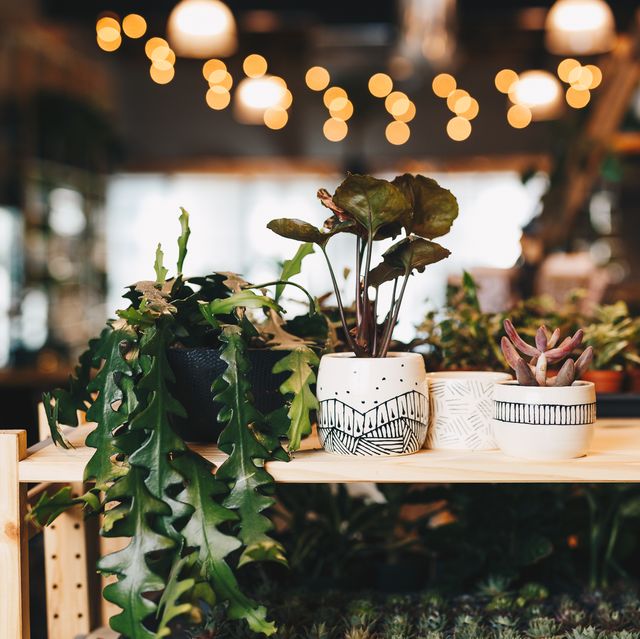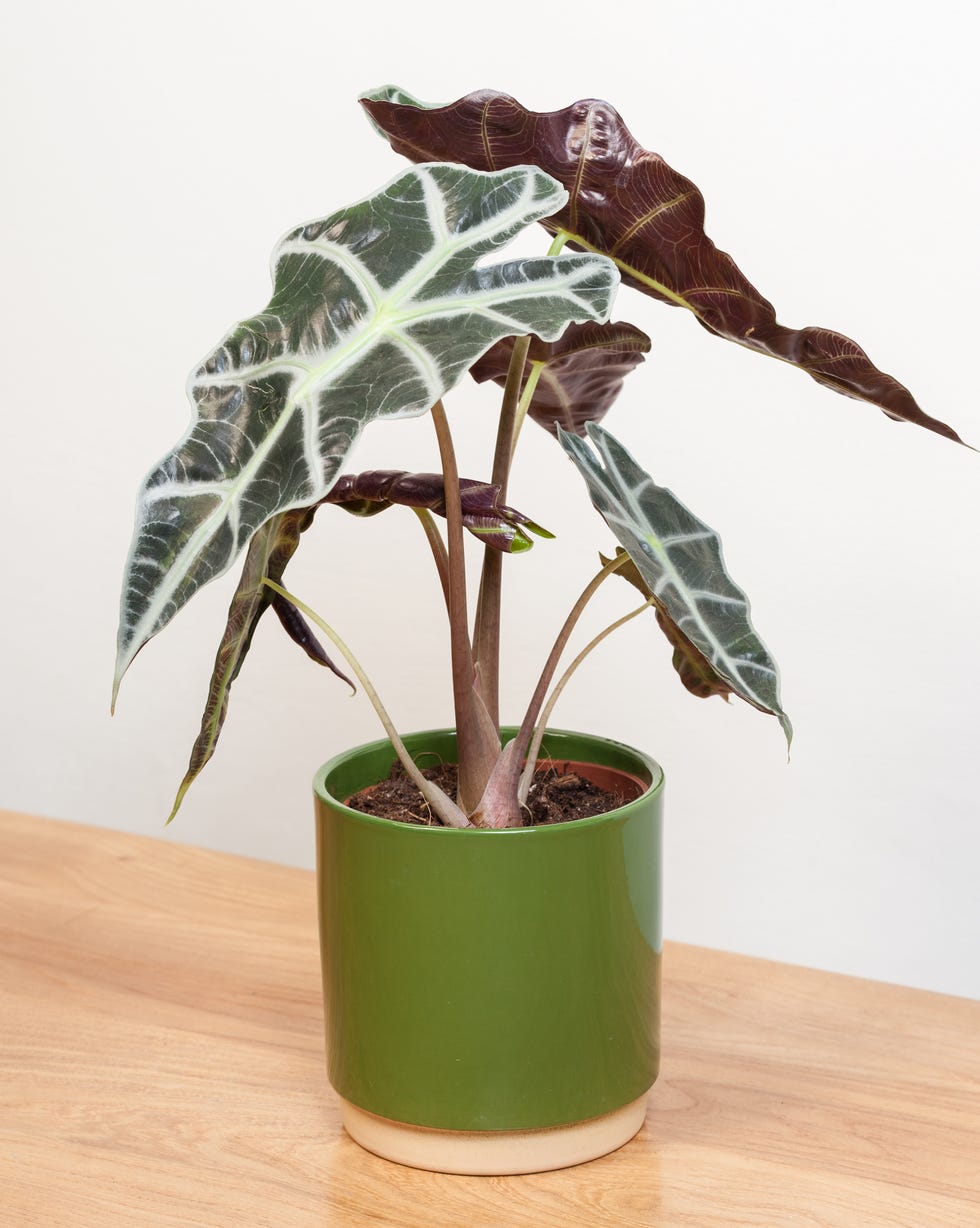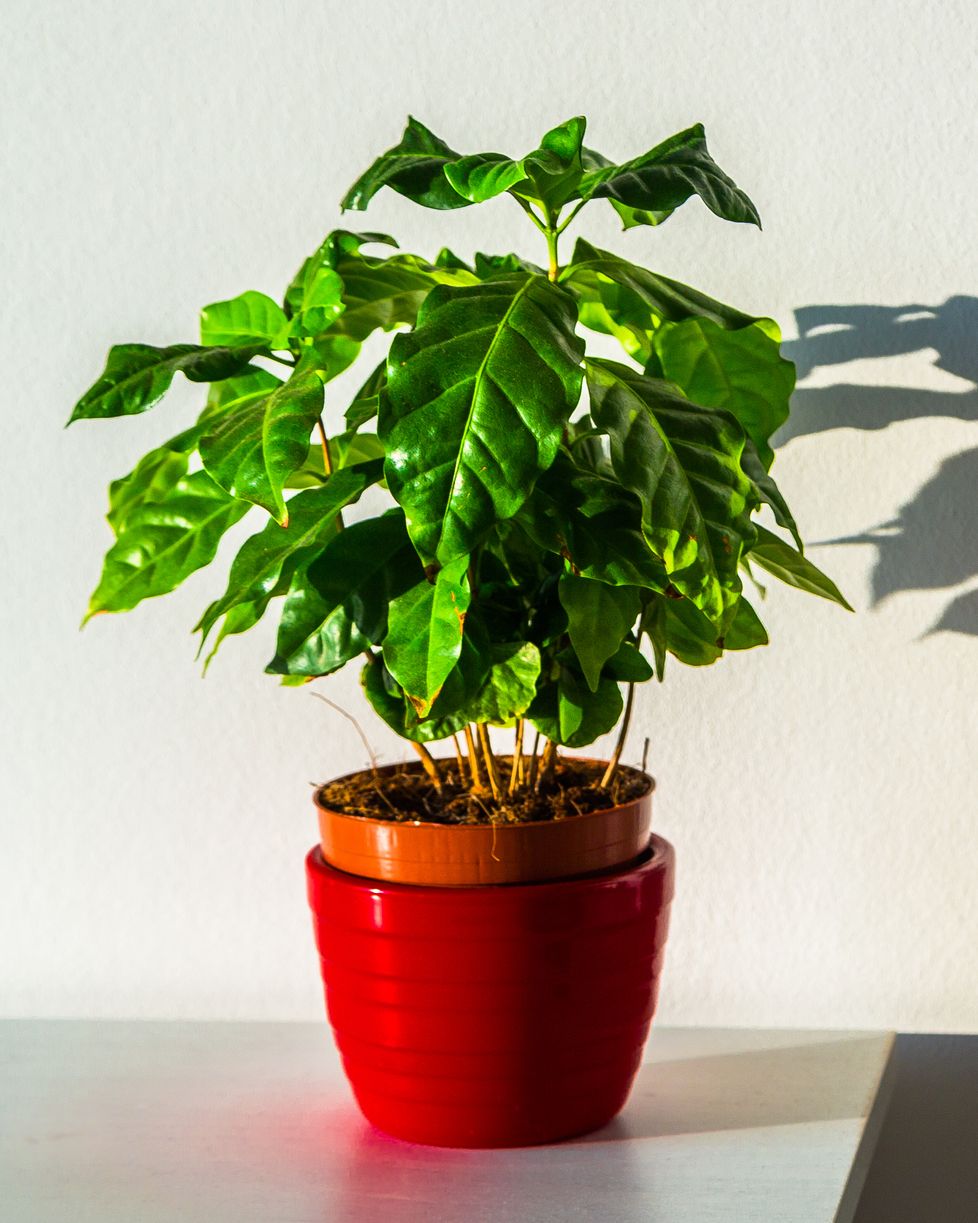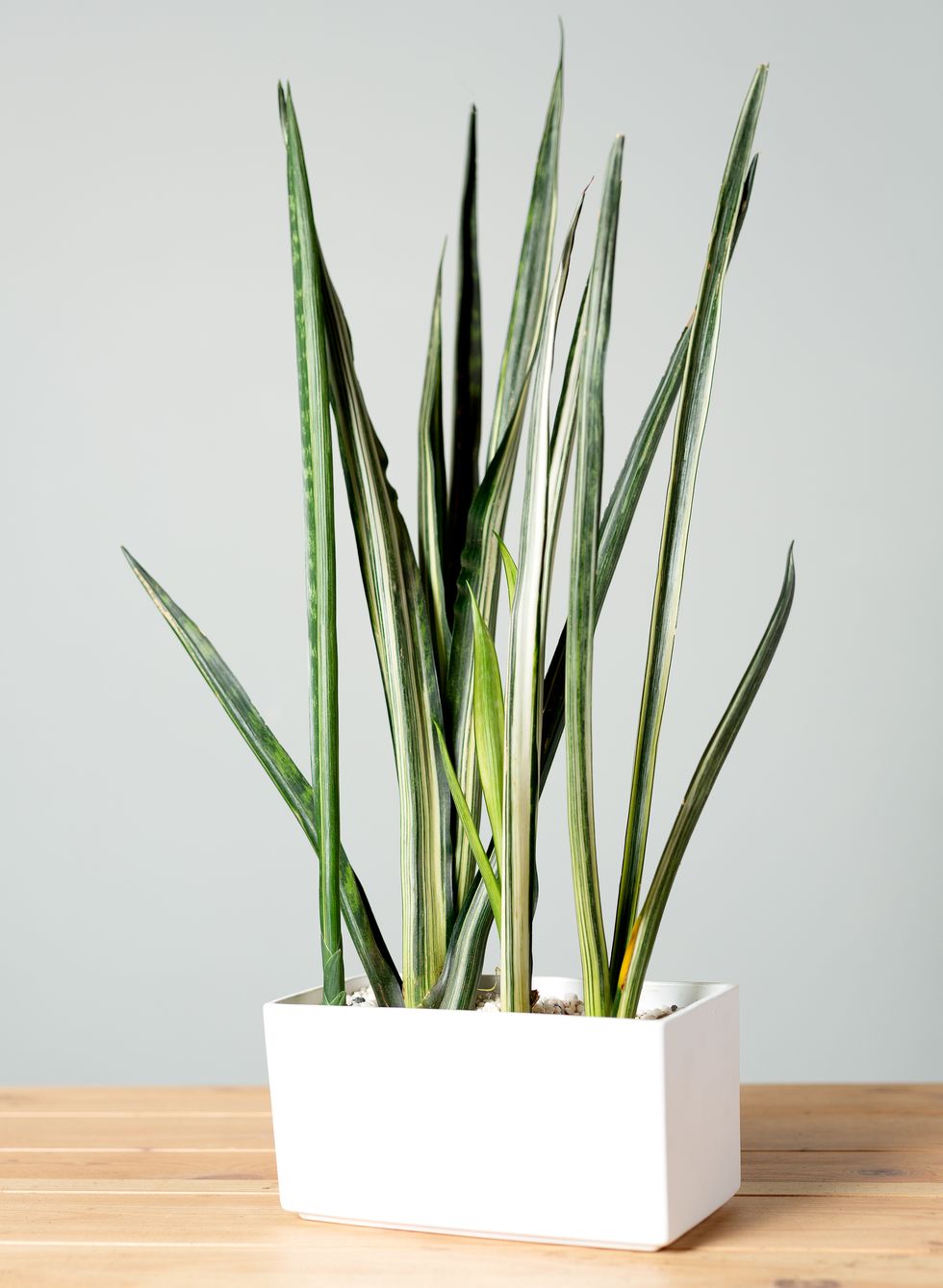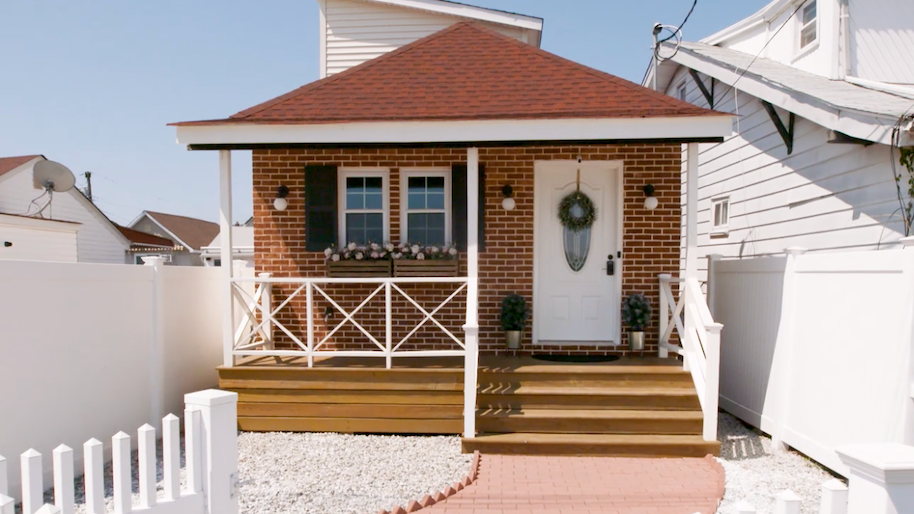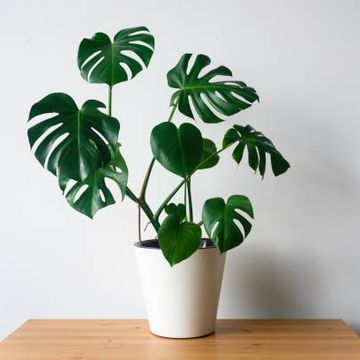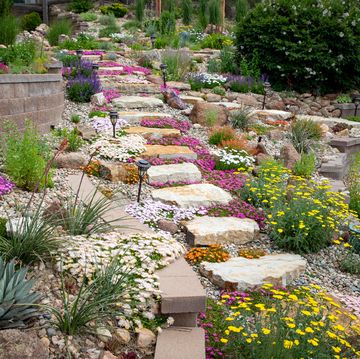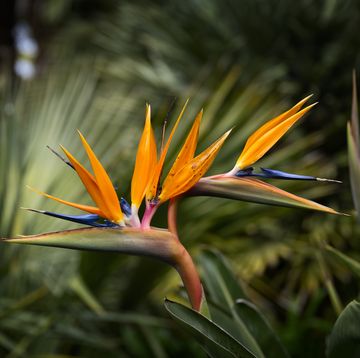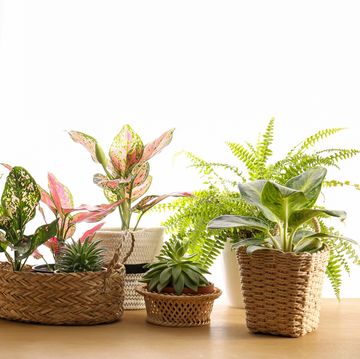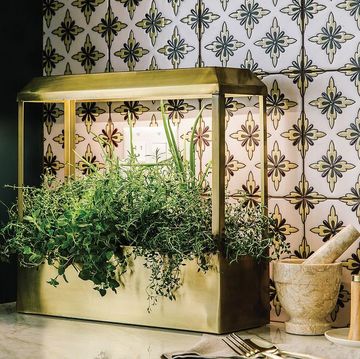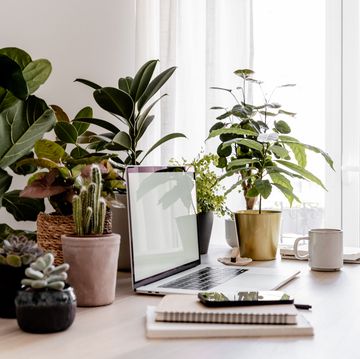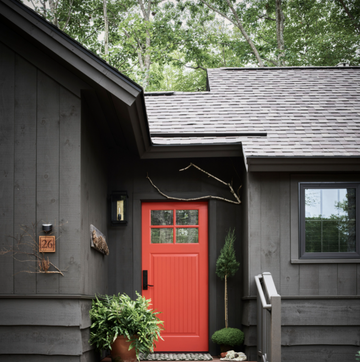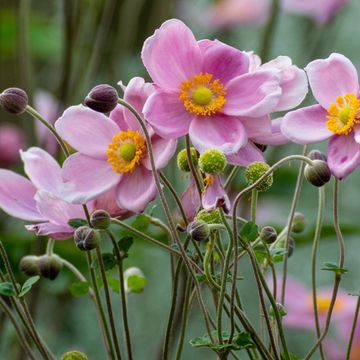If you're one of those people who can't keep a plant happy and thriving to save your life, the key might actually lie in the types of plants you're buying. You might want to fill your home with all the trendy plants you see on Instagram because you like the way they look, but that won't matter unless you're getting a plant that works well with you.
"Most people just need to find what kind of plant they're best at taking care of, because for some people, a cactus is great because they are a neglectful plant parent and they love to just ignore their plants, and some people kill every single cactus they get because they want something to nurture," plant expert Jen Stearns tells House Beautiful.
Jen, owner of Urban Sprouts—a boutique plant shop in downtown Renton, WA—and author of The Inspired Houseplant: Transform Your Home with Indoor Plants shared some intel on the plants that are trending for this spring. But even more importantly, she shared what kind of maintenance each one requires, because before you bring one of these beauties home, you also need to make sure you can keep it thriving.
Crocodile Ferns
The crocodile fern, a type of bird's nest fern, is just one of the exotic ferns Jen says are becoming increasingly popular, and it's also one of the most aptly named. "It's got big glossy leaves, and it's got a lot of texture in it, almost like alligator skin," she explains. "There are a bunch of different ferns that are more interesting than your regular Boston or Dallas fern that everybody knows so well that seem to be trending right now."
Best for...The Nurturing Plant Parent
"Those more interesting ferns do really well in temperate climates, and they're good for somebody who wants something to take care of a couple times a week—something that they can nurture," Jen says.
BUY NOW Crocodile Fern, $12.55, amazon.com
Anthurium
You've probably seen the Anthurium plant before—it's got what Jen describes as "heart-shaped waxy flowers with a stamen coming out of the center"—but it's not the only kind of Anthurium out there, as it's a wide species. Lately, more foliage-centric versions are becoming popular, too. "They tend to be a singular plant with big fleshy roots, and then they send up these really unusual flowers up to several times a year," Jen says. "Not all of them do, but some of them will flower pretty regularly."
Best for...The In-Between Plant Parent
"Anthuriums are very hands off, they like not a lot of water. They will want to be watered, depending on the size of the plant, somewhere between once every one to two weeks with occasional fertilizing.
BUY NOW Flowering Anthurium, $14.99, urbansproutsstore.com
Alocasia
Jen has also noticed lately that people have become more and more drawn to Alocasias, which she describes as "really showy" plants. "They have really defined stems and each stem has one big leaf on it," she explains. "There are some that have bright white veins, some with leaves shaped like stingrays, some with black trunks, even some that are 8-feet tall."
Best for...The Hands-On Plant Parent
"They're a medium-to-bright indirect light plant, and they really like to dry out between their waterings. They also like a little bit of misting, so that one is another one that I'd put with someone who will want to take care of it one or two times a week."
BUY NOW Alocasia Polly, $14.95, amazon.com
Ornamental Foliage Orchids
Orchids are always a favorite, but there's a huge variety out there beyond the ones you might typically see at the grocery store, Jen says, some of which are known for their ornamental foliage. "There are some really cool, cute tiny ones, and the actual plants themselves will look like they're climbing up a tree, and the flowers aren't the focus anymore," Jen says. "People still want the flowers, obviously, but these orchids are more celebrated for their interesting shapes."
Best for...The Nurturer (OR the Low-Maintenance Plant Parent)
Orchids typically come from rainforests, Jen explains, so when you keep them in a pot or have them mounted, they can be a lot of work. "Basically what you want to do is just regularly wet the roots, but you don't actually want the soil to hold moisture too much," Jen says. "Those like pretty regular care, usually between every couple of days and once a week depending on the size and the species." But, if you want an orchid and are a little less hands-on, you can try keeping it under glass. "If you keep it under a glass cloche, which is a really popular way to keep them right now, they're super-duper easy," Jen says. It's all about making sure the water cycle is correct (you want to see no condensation in the cloche in the morning, but some in the evening). "If you have it under a cloche, you'll water it once every two weeks.
BUY NOW Black Jewel Orchid, $16, etsy.com
Coffee Plants
Edible plants (think fruits!) are on the rise, Jen says, and coffee plants are certainly no exception. "Coffee trees, like the arabica bean ones, are actually really easy-to-grow, pretty forgiving houseplants, and they make arabica cherries—inside are coffee beans," Jen explains. "You aren't going to supplement your coffee habit by having one around, but once a year you'll probably get enough beans where, if you wanted to, you could roast them and make your own cup of coffee, and that's kind of fun."
Best for...The Low-Maintenance Plant Parent
"Coffee plants are great, and they're easy," Jen says. "Their soil wants to get dry, and they're really dramatic, so if they do get too dry, they'll get really really droopy looking, but it's okay, because as soon as you water it, it perks right back up. They also like medium indirect light—they can handle pretty low light, but they'll grow faster and produce more fruit, the more light that they get, but they don't want it to be direct, and they don't like to be cold. Otherwise, they're pretty sturdy."
BUY NOW Arabica Coffee Plant, $12, urbansproutsstore.com
Snake Plants
Sure, snake plants (AKA Sansiveria) have already been popular for a while now, but this trendy houseplant isn't going anywhere. "They're just a timeless classic because they're so incredibly forgiving and easy to take care of," Jen says. "No matter what list you're making, it's always going to be on there."
Best for...The Totally Hands-Off Plant Parent
Sure, you likely already know that snake plants are basically foolproof, but it's worth repeating. "They don't need a ton of light, and they can handle quite a bit," Jen says. "And they like to get really dry between waterings."
BUY NOW Sansiveria, $39.99, urbansproutsstore.com
Follow House Beautiful on Instagram.
